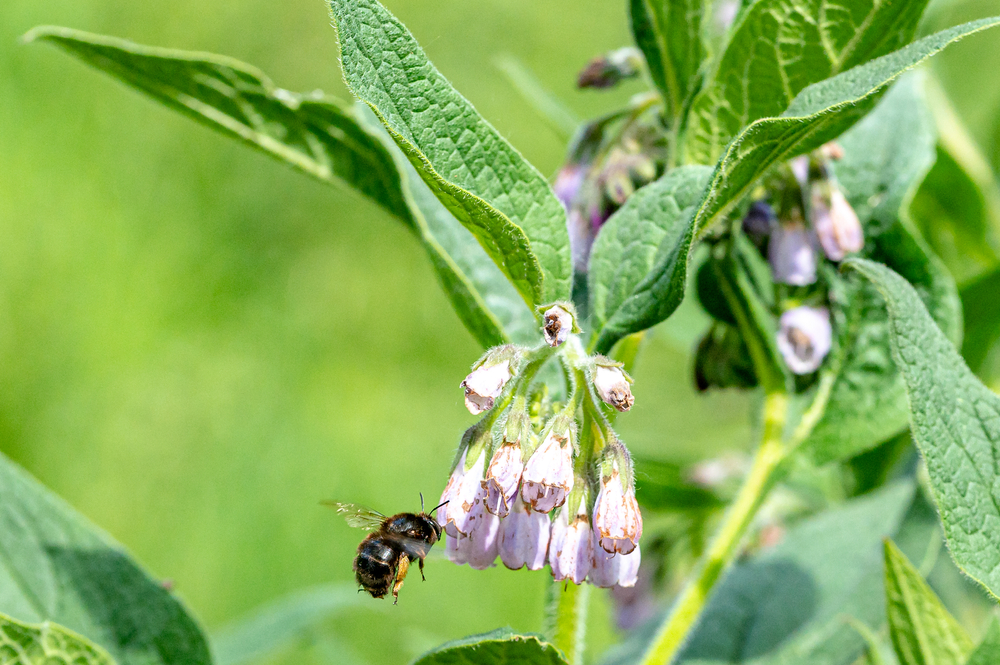Spring has arrived, and very soon Hairy-footed flower bees (Anthophora plumipes) will be on the wing. Hairy-footed flower bees are just one of around 250 solitary bee species that live and breed in the UK, and they are every bit as delightful as their name suggests. I am expecting to see them again any day now. They are my harbingers of spring.

The male Hairy Footed Flower Bee – a delightfully busy little bee that will not sting!
Solitary bees have different life-cycles and nesting behaviour to bumblebees and honeybees. Instead of living in colonies, each adult solitary bee female creates her own nest, laying individual eggs inside separate cells, which she has already provided with sufficient pollen for the larvae to feed on when they hatch out. Some solitary bees dig nests beneath the ground, whilst others use pre-existing cavities such as beetle holes, plant stems, man-made ‘bee hotels’, or old stone, brick, and cob walls. Those species that nest inside old walls, are often referred to as ‘masonry bees’.
There is such a wall at the bottom of Stoney Path in Shaftesbury, known locally (for good reason) as The Bee Wall. You wouldn’t know it during the colder months, but by the end of March this old stone wall will be buzzing with activity, as its resident population of Hairy-footed flower bees emerge from their long winter sleep to mate, and begin their life-cycles all over again.

The Hairy-footed flower bee males emerge first. Ginger coloured and quite furry, they resemble tiny bumblebees, but if you look closely you will see that their legs are feathered. It is the male’s feathery legs that give this bee its common name. The females are completely black, apart from the bristly pollen collecting hairs on their back legs, which are yellow/orange. Both sexes have high pitched buzzes and behave quite frenetically as they dart back and forth amongst clumps of their favourite flowers, which include: Lungwort, Dwarf Comfrey, Wallflowers, Primrose and Rosemary. The other distinguishing feature that helps identify Hairy-footed flower bees is their long pointed proboscis, and the way they hover above flowers to collect nectar.If you have any of the aforementioned flowers in your garden, you stand an exceedingly good chance of seeing these bees – which, by the way, are very gentle and will not sting.
If not, you still have plenty of time to get to a garden centre and purchase some! “If you plant them they will come”
by Brigit Strawbridge
http://beestrawbridge.blogspot.com
Twitter: @B_Strawbridge



